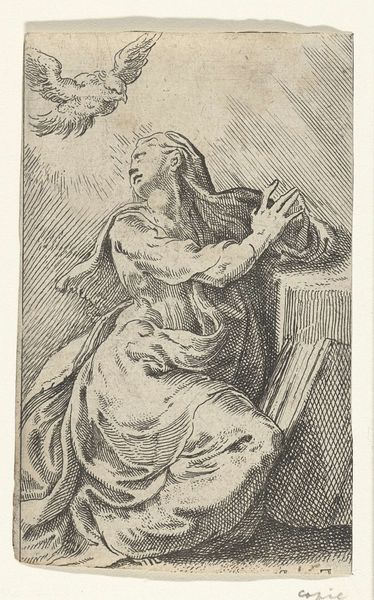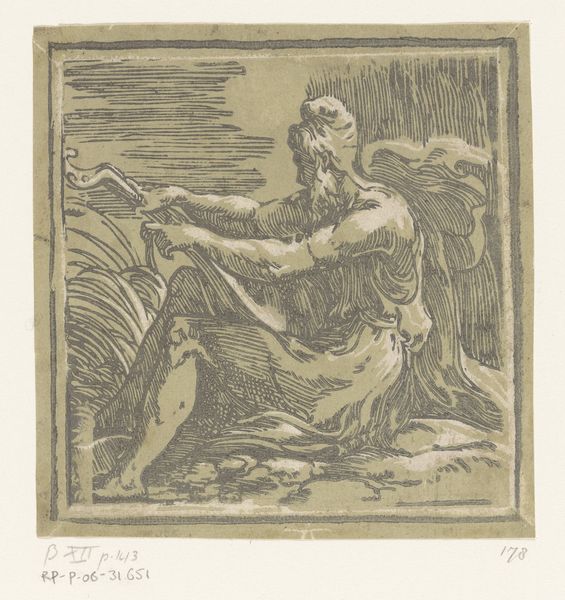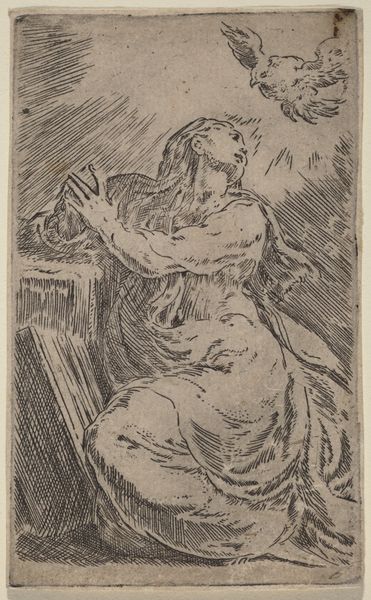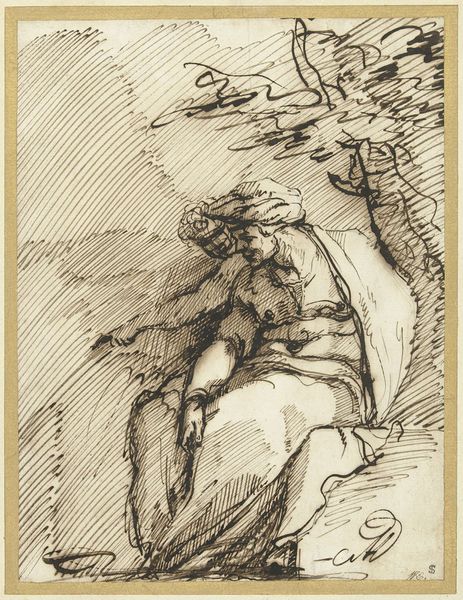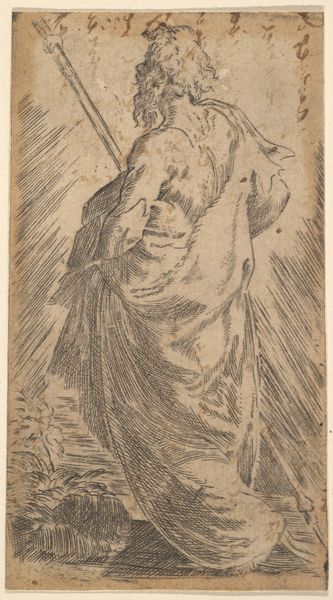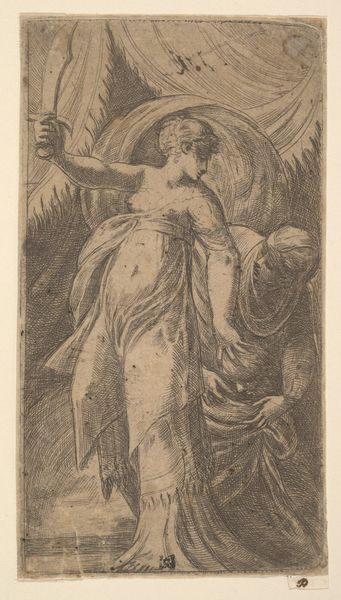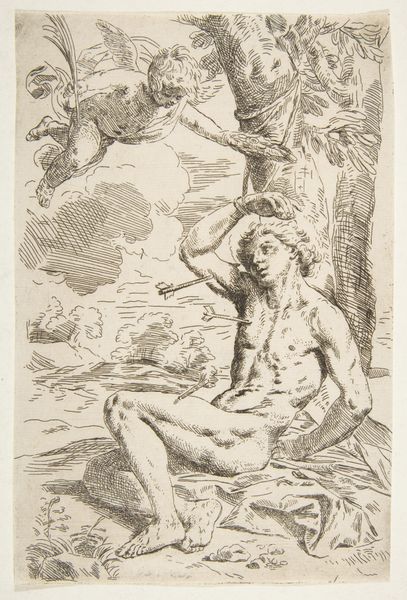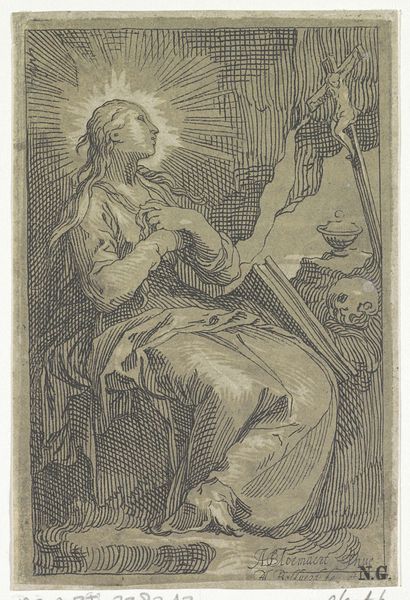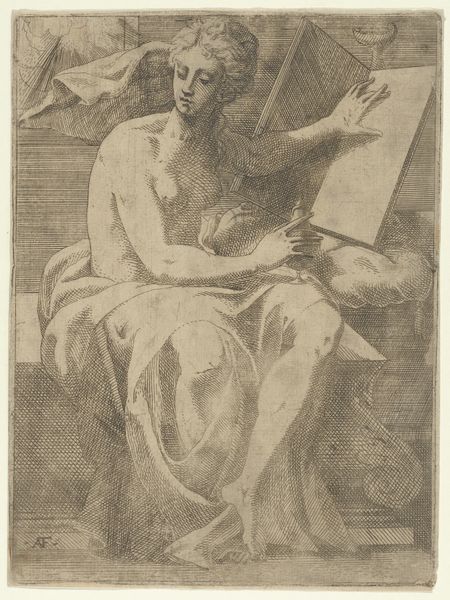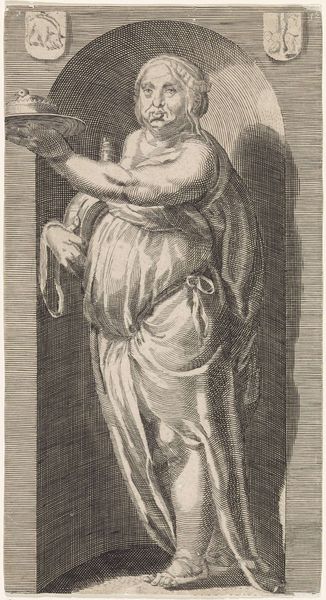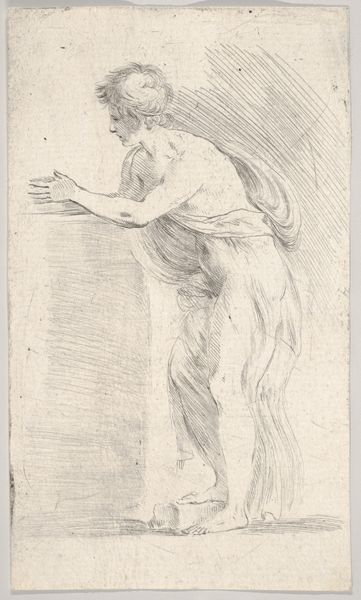
print, etching
# print
#
etching
#
mannerism
#
figuration
#
italian-renaissance
Dimensions: height 107 mm, width 66 mm
Copyright: Rijks Museum: Open Domain
Editor: Here we have Parmigianino's "Annunciation," created sometime between 1524 and 1540. It's an etching, and it's currently held at the Rijksmuseum. I'm immediately struck by the swirling lines and dramatic upward gaze of the figure. What catches your eye in this piece? Curator: The composition is dominated by the dynamic interplay of line and form. Note how Parmigianino employs dense hatching to create depth and shadow, particularly around the figure of the Virgin and the descending dove. Observe the figure's elongated proportions and stylized pose. The dynamism relies entirely on linear composition. Editor: So, you're focusing on how the artist used line to create a sense of movement. Is there a reason why Parmigianino chose this style? Curator: Indeed. Parmigianino was a key figure in Mannerism, which prized elegance and artifice over strict naturalism. He wanted the expressive potential unlocked through technique and structure, through form and line, regardless of the message. The figure is reaching towards the divine, but her contorted, elegant posture underscores the era's aesthetic ideals, rather than necessarily representing devotion. Editor: That makes sense. So, rather than thinking about it as a religious scene, we should appreciate the artistic choices he was making? Curator: Precisely. Analyze how the swirling lines guide your eye and how the varying densities of hatching create depth and volume. Note how form informs understanding of expression. Do you see how the very etching communicates a narrative of artistic ambition? Editor: I do now. It's fascinating how a close look at technique can completely shift our interpretation. Curator: Exactly. Sometimes understanding an artwork involves nothing beyond observation.
Comments
No comments
Be the first to comment and join the conversation on the ultimate creative platform.
